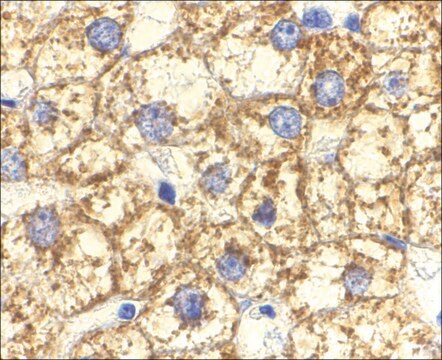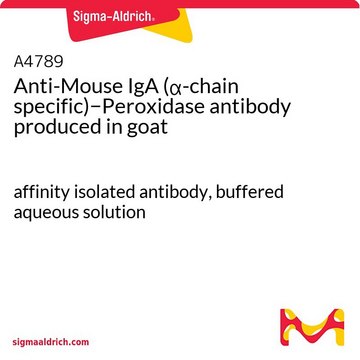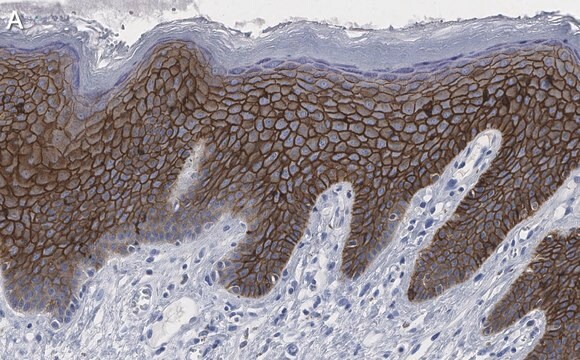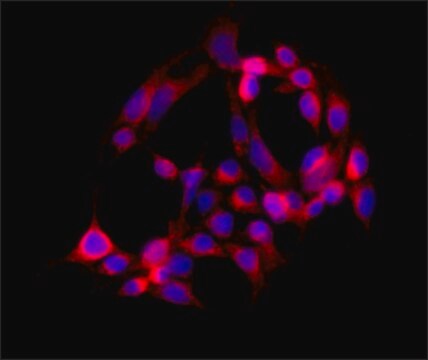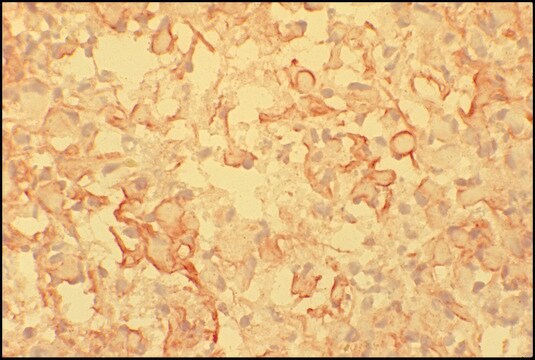SAB4200125
Anti-Notch3 antibody, Rat monoclonal
purified from hybridoma cell culture
Synonym(e):
Anti-CADASIL, Anti-CASIL, Monoclonal Anti-Notch3 antibody produced in rat
About This Item
Empfohlene Produkte
Biologische Quelle
rat
Konjugat
unconjugated
Antikörperform
purified from hybridoma cell culture
Antikörper-Produkttyp
primary antibodies
Klon
monoclonal
Form
buffered aqueous solution
Mol-Gew.
antigen ~270 kDa
Speziesreaktivität
rat, human
Verpackung
antibody small pack of 25 μL
Methode(n)
western blot: 2-4 μg/mL using using Jurkat cell extracts
Isotyp
IgG2a
UniProt-Hinterlegungsnummer
Versandbedingung
dry ice
Lagertemp.
−20°C
Posttranslationale Modifikation Target
unmodified
Angaben zum Gen
human ... NOTCH3(4854)
rat ... Notch3(56761)
Allgemeine Beschreibung
Members of the Notch gene family encode transmembrane receptors. Mammals have four Notch receptors, Notch1 through Notch4. Notch1 and Notch2 have the highest homology with each other, whereas Notch3 and Notch4 are structurally divergent, lacking the transactivation domain that is found in Notch1 and Notch2. The Notch3 receptor possesses 34 extracellular epidermal growth factor (EGF)-like repeats and three cysteine-rich Notch/LIN12 repeats (LIN). It also contains two protein-protein interaction domains, the RAM domain (R), two nuclear localization signals (NLS), six ankyrin (ANK) repeats and a PEST sequence (P) at its cytoplasmic portion. The NOTCH3 gene is mapped to human chromosome 19p13.12.
Spezifität
Immunogen
Anwendung
Biochem./physiol. Wirkung
Physikalische Form
Lagerung und Haltbarkeit
Haftungsausschluss
Sie haben nicht das passende Produkt gefunden?
Probieren Sie unser Produkt-Auswahlhilfe. aus.
Lagerklassenschlüssel
10 - Combustible liquids
Flammpunkt (°F)
Not applicable
Flammpunkt (°C)
Not applicable
Analysenzertifikate (COA)
Suchen Sie nach Analysenzertifikate (COA), indem Sie die Lot-/Chargennummer des Produkts eingeben. Lot- und Chargennummern sind auf dem Produktetikett hinter den Wörtern ‘Lot’ oder ‘Batch’ (Lot oder Charge) zu finden.
Besitzen Sie dieses Produkt bereits?
In der Dokumentenbibliothek finden Sie die Dokumentation zu den Produkten, die Sie kürzlich erworben haben.
Unser Team von Wissenschaftlern verfügt über Erfahrung in allen Forschungsbereichen einschließlich Life Science, Materialwissenschaften, chemischer Synthese, Chromatographie, Analytik und vielen mehr..
Setzen Sie sich mit dem technischen Dienst in Verbindung.


